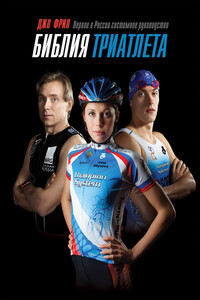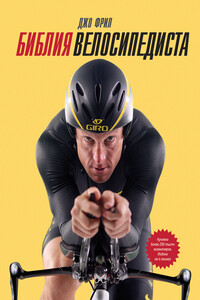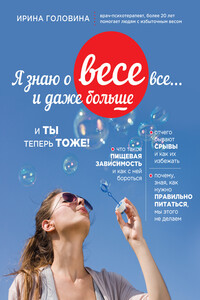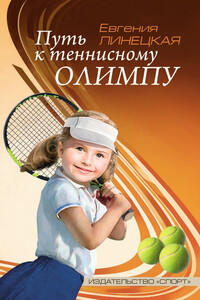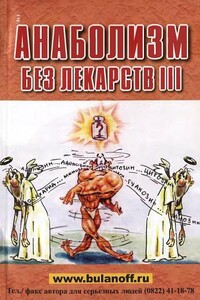Wiener, A., J. Mizrahi, and O. Verbitsky. “Enhancement of Tibialis Anterior Recovery by Intermittent Sequential Pneumatic Compression of the Legs”. Basic Applied Myology (2001) 11 (2): 87–90.
Wilcox, I., J. Cronin, and W. Hing. “Physiological Response to Water Immersion: A Method for Sport Recovery?” Sports Medicine (2006) 6 (9): 747–765.
Zelikovski, A., C. L. Kaye, G. Fink, S. A. Spitzer, and Y. Shapiro. “The Effects of the Modified Intermittent Sequential Pneumatic Device (MISPD) on Exercise Performance Following an Exhaustive Exercise Bout”. British Journal of Sports Medicine (1993) 27 (4): 255–259.
Глава 12. Скорость
Ardigo, L. P., C. LaFortuna, A. E. Minetti, P. Mognoni, and F. Saibene. “Metabolic and Mechanical Aspects of Foot Landing Type, Forefoot and Rearfoot Strike, in Human Running”. Acta Physiologica Scandinavica (1995) 155 (1): 17–22.
Beneke, R., and M. Hutler. “The Effects of Training on Running Economy and Performance in Recreational Athletes”. Medicine and Science in Sports and Exercise (2005) 37 (10): 1794–1799.
Garside, I., and D. A. Doran. “Effects of Bicycle Frame Ergonomics on Triathlon 10-km Running Performance”. Journal of Sports Sciences (2000) 18 (10): 825–833.
Hasegawa, H., T. Yamauchi, and W. J. Kraemer. “Foot Strike Patterns of Runners at the 15-km Point During an Elite-Level Half Marathon”. Journal of Strength and Conditioning Research (2007) 21 (3): 888–893.
Lucia, A., J. Olivan, J. Bravo, M. Gonzalez-Freire, and C. Foster. “The Key to Top-Level Endurance Running Performance: A Unique Example”. British Journal of Sports Medicine (2008) 42 (3): 172–174.
Nummela, A., T. Keranen, and L. O. Mikkelsson. “Factors Related to Top Running Speed and Economy”. International Journal of Sports Medicine (2007) 28 (8): 655–661.
Paavolainen, L., A. Nummela, H. Rusko, and K. Hakkinen. “Neuromuscular Characteristics and Fatigue During 10-km Running”. International Journal of Sports Medicine (1999) 20 (8): 516–521.
Peeling, P., and G. Landers. “Swimming Intensity During Triathlon: A Review of Current Research and Strategies to Enhance Race Performance”. Journal of Sports Sciences (2009) 27 (10): 1079–1085.
Price, D., and B. Donne. “Effect of Variation in Seat Tube Angle at Different Seat Heights on Submaximal Cycling Performance in Man”. Journal of Sports Sciences (1997) 15: 395–402.
Saunders, P. U., D. B. Pyne, R. D. Telford, and J. A. Hawley. “Factors Affecting Running Economy in Trained Distance Runners”. Sports Medicine (2004) 34 (7): 465–485.
Steudel-Numbers, K. L., T. D. Weaver, and C. M. Wall-Scheler. “The Evolution of Human Running: Effects of Changes in Lower-Limb Length on Locomotor Economy”. Journal of Human Evolution (2007) 53 (2): 191–196.
Глава 13. Мышечная сила
Ahmad, C. S., A. M. Clark, N. Heilmann, J. S. Schoeb, T. R. Gardner, and W. N. Levine. “Effect of Gender and Maturity on Quadriceps-to-Hamstring Strength Ratio and Anterior Cruciate Ligament Laxity”. American Journal of Sports Medicine (2006) 34 (3): 370–374.
Aspenes, S. T., and T. Karlsen. “Exercise-Training Intervention Studies in Competitive-Swimming”. Sports Medicine (2012) 42 (6): 527–543.
Baar, K. “Using Molecular Biology to Maximize Concurrent Training”. Sports Medicine (2015) 44 (Supplement 2): S117–S125.
Barnes, K. R., W. G. Hopkins, M. R. McGuigan, M. E. Northuis, and A. E. Kilding. “Effects of Resistance Training on Running Economy and Cross-Country Performance”. Medicine and Science in Sports and Exercise (2013) 45 (12): 2322–2331.
Behm, D. G., D. Cappa, and G. A. Power. “Trunk Muscle Activation During Moderate and High-Intensity Running”. Applied Physiology, Nutrition, and Metabolism (2009) 34 (6): 1008–1016.
Behm, D. G., and D. G. Sale. “Intended Rather than Actual Movement Velocity Determines Velocity-Specific Training Response”. Journal of Applied Physiology (1993) 74 (1): 359–368.
Coombs R., and G. Garbutt. “Developments in the Use of the Hamstring/Quadriceps Ratio for the Assessment of Muscle Balance”. Journal of Sports Science and Medicine (2002) 1 (3): 56–62.
